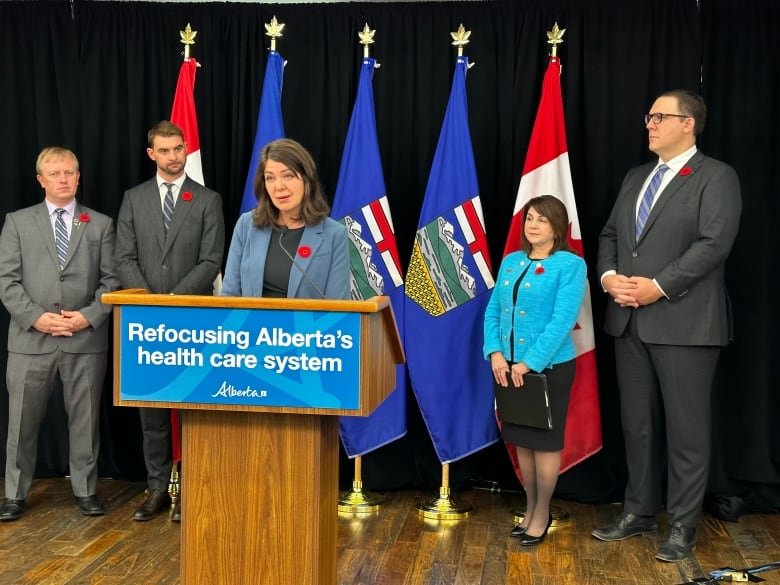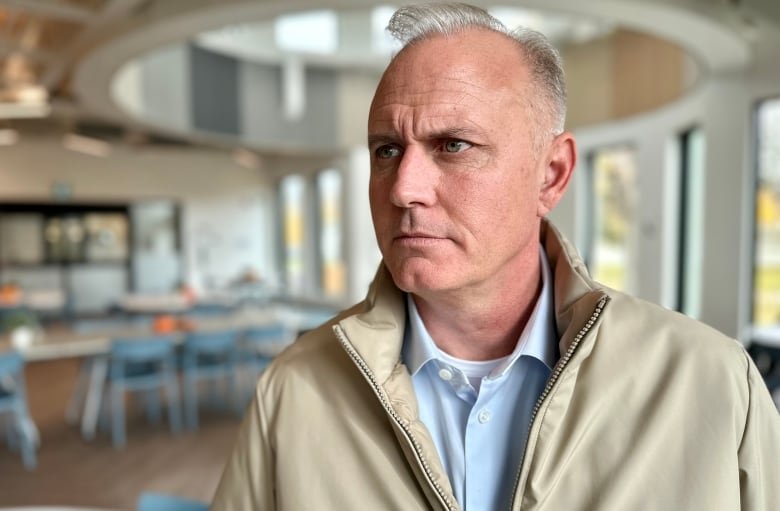As the toxic drug crisis continues to claim thousands of lives each year — fuelling perceptions that existing measures are failing — the notion of involuntary treatment is gaining political traction.
Across Canada, there’s a growing number of political leaders proposing to force people into treatment for drug addiction, even though a recent research review found inconclusive evidence about whether it’s effective.
Some experts in addiction medicine warn against seizing on forced treatment as an easy answer to a complex health and social problem.
“It’s a response to seeing pain and suffering in front of you and saying, ‘I don’t want to have to see this, so let’s just make sure that this is out of the way,'” said Dr. Anita Srivastava, medical director of addiction medicine for Unity Health in Toronto.
“I think it’s a frustrated response to a problem that [people] perceive as having no real solution,” said Srivastava in an interview. “I don’t think it will work, but I can understand where it might be coming from.”
Others think involuntary treatment needs to be one of the available options, given the urgency of the crisis. More than 47,000 Canadians have died from toxic opioids since 2016, according to the latest federal figures published in September.
As cities across Canada struggle with an addiction crisis, a growing number of politicians are proposing involuntary drug treatment as a solution, but as CBC’s Mike Crawley explains, the evidence is far from clear that forced care is the right way to go.
‘More research is needed’
A task force created by the Canadian Society of Addiction Medicine recently reviewed worldwide research into the effectiveness of involuntary treatment. The task force looked at 42 studies from around the globe and published its report in 2023 in the Canadian Journal of Addiction.
Of the 22 studies it found that compared involuntary to voluntary treatments, 10 reported negative outcomes from involuntary treatments, five found no significant differences, and seven found improvements, mainly in retention in treatment. Only one of those seven found a post-treatment reduction in substance use, and that was not sustained long-term.
“There is a lack of high-quality evidence to support or refute involuntary treatment for [substance use disorders],” the report concluded. “More research is needed to inform health policy.”
The review also noted the difficulty drawing conclusions about what worked, since the quality and types of treatments offered — mostly in U.S., China and Canada — varied widely.
Despite that lack of evidence and the call for more research, there is no shortage of politicians suggesting involuntary treatment as a policy option.
Forcing people into addiction treatment was floated by various parties in the recent British Columbia and New Brunswick provincial election campaigns.
In Ontario, the mayor of Brampton, Patrick Brown, is calling on the provincial government to launch a pilot project that would allow for involuntary treatment of drug addiction in his community.

The province that’s closest to moving ahead on forced treatment is Alberta, where the government of Premier Danielle Smith has promised legislation.
Requires a change in legislation
Under the Criminal Code, the courts cannot force anyone into drug treatment, but can in certain cases offer it as an alternative to a sentence in custody, with the threat of jail time if the person fails to complete treatment.
Provincial mental health legislation across Canada generally allows for involuntary psychiatric treatment if a doctor deems a person to be a danger to themselves or others. Forcing people into addiction treatment would require a province to amend its health-care consent legislation.
Keith Humphreys, a professor of psychiatry at Stanford University in Palo Alto, Calif., who chaired Alberta’s expert advisory panel on addiction recovery, believes involuntary treatment needs to be part of the arsenal of responding to the drug crisis.
“We have to be realistic about the fact that addiction is a chronic disorder,” said Humphreys in an interview.
“When we talk [about] forcing people into treatment, we should remember there aren’t really many people who would be just spontaneously waking up in a tent and saying, ‘I don’t want ever to use fentanyl ever again.'”

The calls for forced treatment are gaining momentum in part because of perceptions that the current harm-reduction approach to the drug crisis is failing .
Not enough voluntary treatment available
However, opponents of forced treatment argue that what’s really to blame is the growing potency and toxicity of the illicit drug supply – the drugs have become stronger, more addictive and deadlier than when heroin dominated the street trade.
Dan Werb, executive director of the Centre on Drug Policy Evaluation at St. Michael’s Hospital in Toronto, says those who advocate for forced treatment assume that the fault lies with the person who is addicted.
“The scientific evidence to support [involuntary treatment] as an effective approach just simply isn’t there,” he said in an interview.
Werb was the lead author of a 2015 review of research into the effectiveness of compulsory drug treatment, published in the International Journal of Drug Policy. Of the nine studies reviewed at that time, only two showed that compulsory treatment had a positive impact on criminal reoffending and drug use.
Werb and his fellow authors concluded that policymakers should prioritize investments in voluntary treatment programs. However, he says governments in Canada are not putting enough resources into such programs.

“We have this massive disparity between the number of people who are referred to treatment and the capacity of the treatment system to meet that demand,” he said.
Dr. Katie Dorman, a family physician at the Sumac Creek Health Centre in Toronto who has worked in addiction medicine through much of her career, says there are far too many barriers to voluntary treatment, including long waits and restrictive criteria.
“I think it’s absurd that we’re talking about involuntary treatment when there’s so many people who want care who can’t access it,” Dorman said in an interview.
Alberta’s wait times far shorter than Ontario’s
For intensive residential treatment programs – designed for people with chronic substance use – statistics provided by Ontario’s Ministry of Health show the average wait time is 16 days for assessment then another 72 days for admission.
In Alberta, the comparable wait time to begin residential treatment ranges from 20 to 37 days, according to figures from the province’s Ministry of Mental Health and Addiction
The Alberta government has dramatically ramped up its publicly funded drug treatment program since 2019, adding 7,700 detox spaces and more than 2,700 residential treatment and recovery beds, an overall capacity increase of more than 55 per cent.

“Everything about the Alberta model is really geared towards getting people off of drugs,” said Marshall Smith, former chief of staff (but no relation) to the premier, in an interview in October at a newly opened recovery facility in Gunn, Alta., about 90 kilometres northwest of Edmonton.
While Smith says it’s crucial to make voluntary drug treatment easily available, he also believes there’s a role for forcing people into treatment.
“Is it better to have involuntary care or to allow somebody to languish in a tent shooting fentanyl in their neck under an overpass with the threat of dying?” said Smith. “I would say it’s more effective than that any day of the week.”
His perspective is informed by personal experience. Smith has spoken publicly of how he spent four years homeless in Vancouver addicted to methamphetamines. He traces his recovery to an ultimatum he got from the police.
“They essentially told me, ‘Go to treatment or go to jail,'” he said in his interview with CBC News. “I picked treatment and I haven’t looked back since.”















